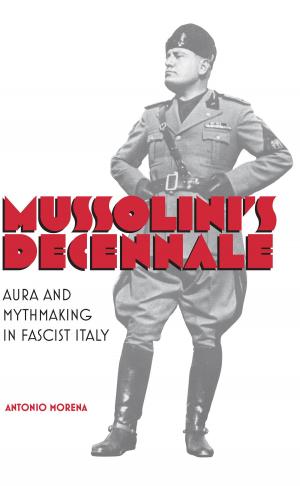Boundaries of the City
The Architecture of Western Urbanism
Nonfiction, Art & Architecture, Architecture, Planning, History, Social & Cultural Studies, Social Science, Sociology, Urban| Author: | Alan Waterhouse | ISBN: | 9781442656161 |
| Publisher: | University of Toronto Press, Scholarly Publishing Division | Publication: | December 15, 1994 |
| Imprint: | Language: | English |
| Author: | Alan Waterhouse |
| ISBN: | 9781442656161 |
| Publisher: | University of Toronto Press, Scholarly Publishing Division |
| Publication: | December 15, 1994 |
| Imprint: | |
| Language: | English |
In this study Alan Waterhouse draws on anthropological, social and cultural history, literature, and philosophy to reach an understanding of the roots of Western architecture and city building. He explores the illusion that cities are constructed to impose rational order, an order articulated through urban boundaries. These boundaries, he finds, are shaped around our instinctive fears and insecurities about crime, insurrection, and the violent disruption of everyday life. At the same time, contrary instincts aspire to create a unified domain, to proclaim the interdependence of things through constructed work. Cities are shaped less by rational design than by a recurring dialectic of boundary formation.
These impulses underlie the formal vocabulary of architecture and urbanism. Waterhouse follows them through the theories, ideologies, and styles that seem to govern city buildings; he finds their presence in the creation of territorial divisions, and also wherever the cityscape has been shaped by a poetic imagination.
Tracing his narrative of urban boundaries from antiquity to the birth of modernism, Waterhouse discovers some stubborn legacies that bind contemporary urban design to the past. Part One explores the boundary dialectic in our regard for deities, for nature, and for one another, and then as a powerful influence on architectural invention and our ways of life. Part Two traces these themes through city building history, to show how architecture and human relatedness are subordinated by boundary formation in the cycles of urbanization.
Electronic Format Disclaimer: Image 6.5 removed at the request of the rights holder.
In this study Alan Waterhouse draws on anthropological, social and cultural history, literature, and philosophy to reach an understanding of the roots of Western architecture and city building. He explores the illusion that cities are constructed to impose rational order, an order articulated through urban boundaries. These boundaries, he finds, are shaped around our instinctive fears and insecurities about crime, insurrection, and the violent disruption of everyday life. At the same time, contrary instincts aspire to create a unified domain, to proclaim the interdependence of things through constructed work. Cities are shaped less by rational design than by a recurring dialectic of boundary formation.
These impulses underlie the formal vocabulary of architecture and urbanism. Waterhouse follows them through the theories, ideologies, and styles that seem to govern city buildings; he finds their presence in the creation of territorial divisions, and also wherever the cityscape has been shaped by a poetic imagination.
Tracing his narrative of urban boundaries from antiquity to the birth of modernism, Waterhouse discovers some stubborn legacies that bind contemporary urban design to the past. Part One explores the boundary dialectic in our regard for deities, for nature, and for one another, and then as a powerful influence on architectural invention and our ways of life. Part Two traces these themes through city building history, to show how architecture and human relatedness are subordinated by boundary formation in the cycles of urbanization.
Electronic Format Disclaimer: Image 6.5 removed at the request of the rights holder.















